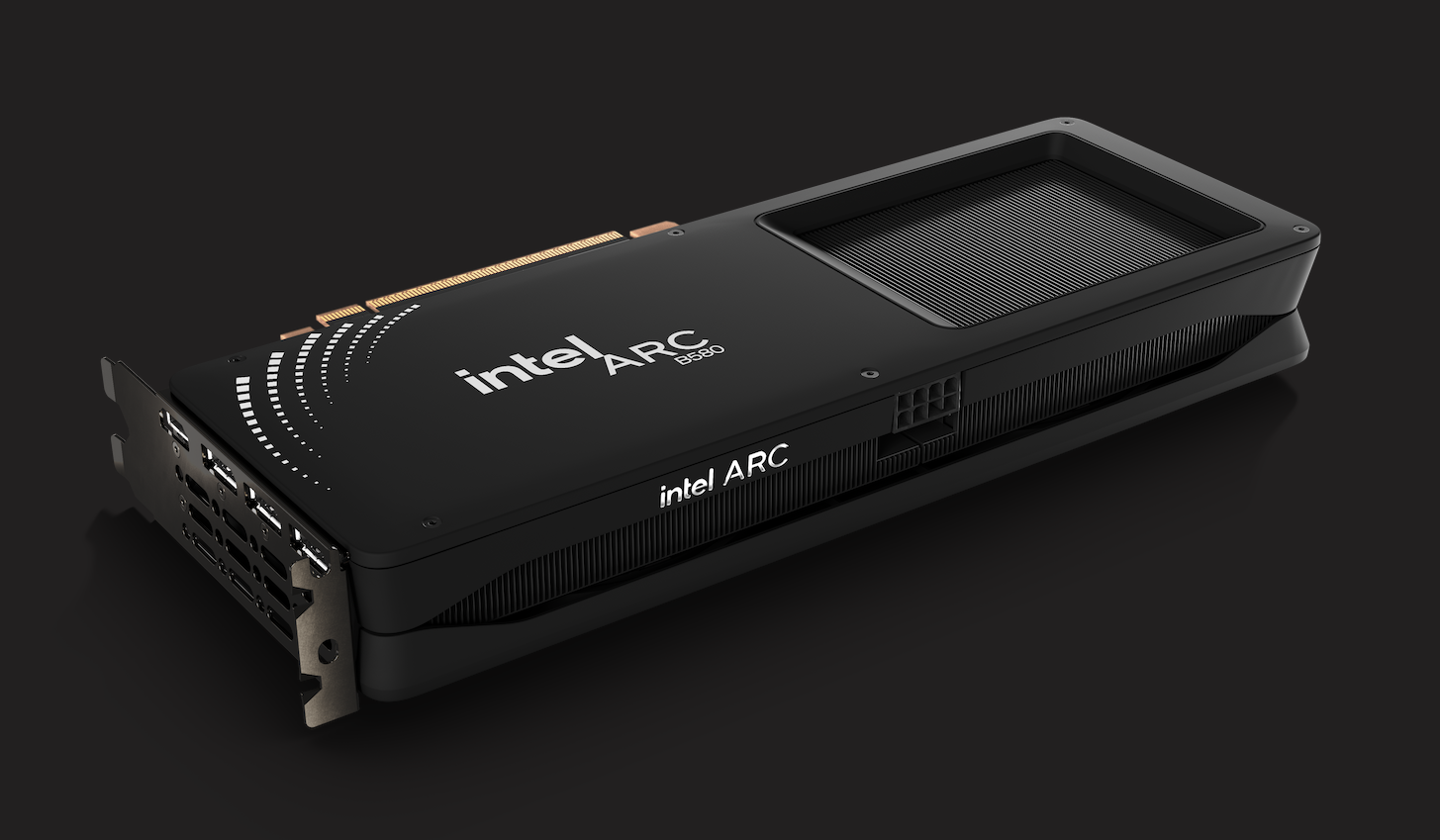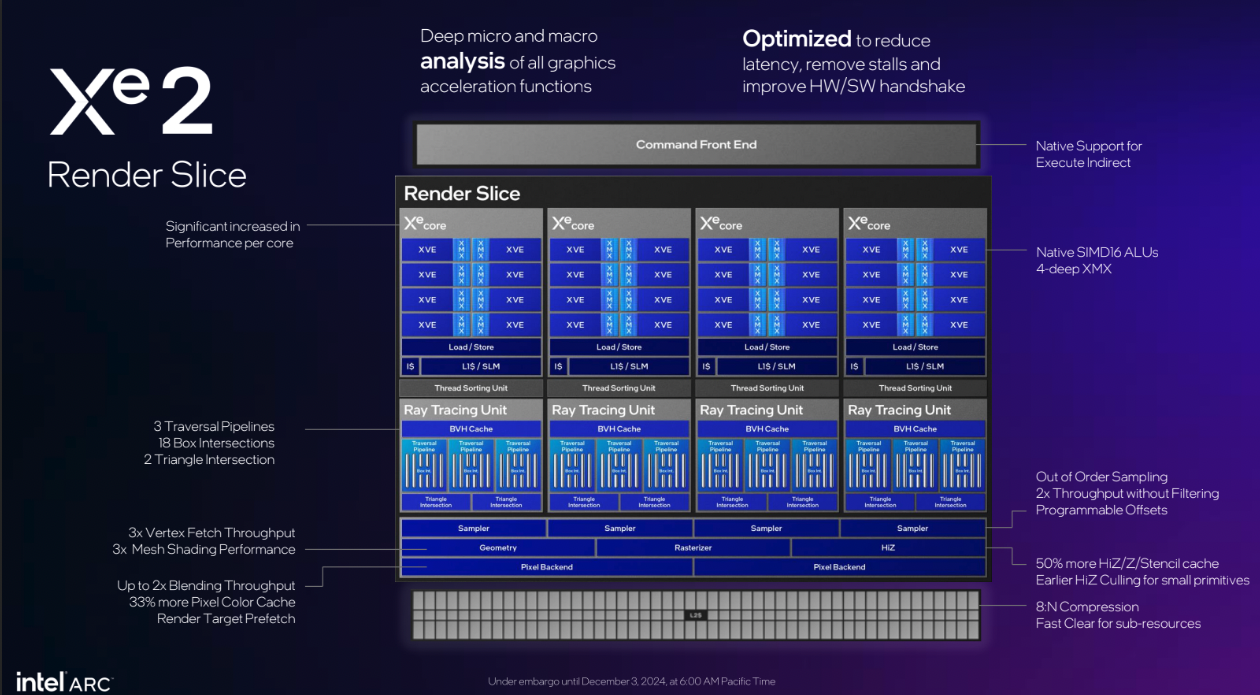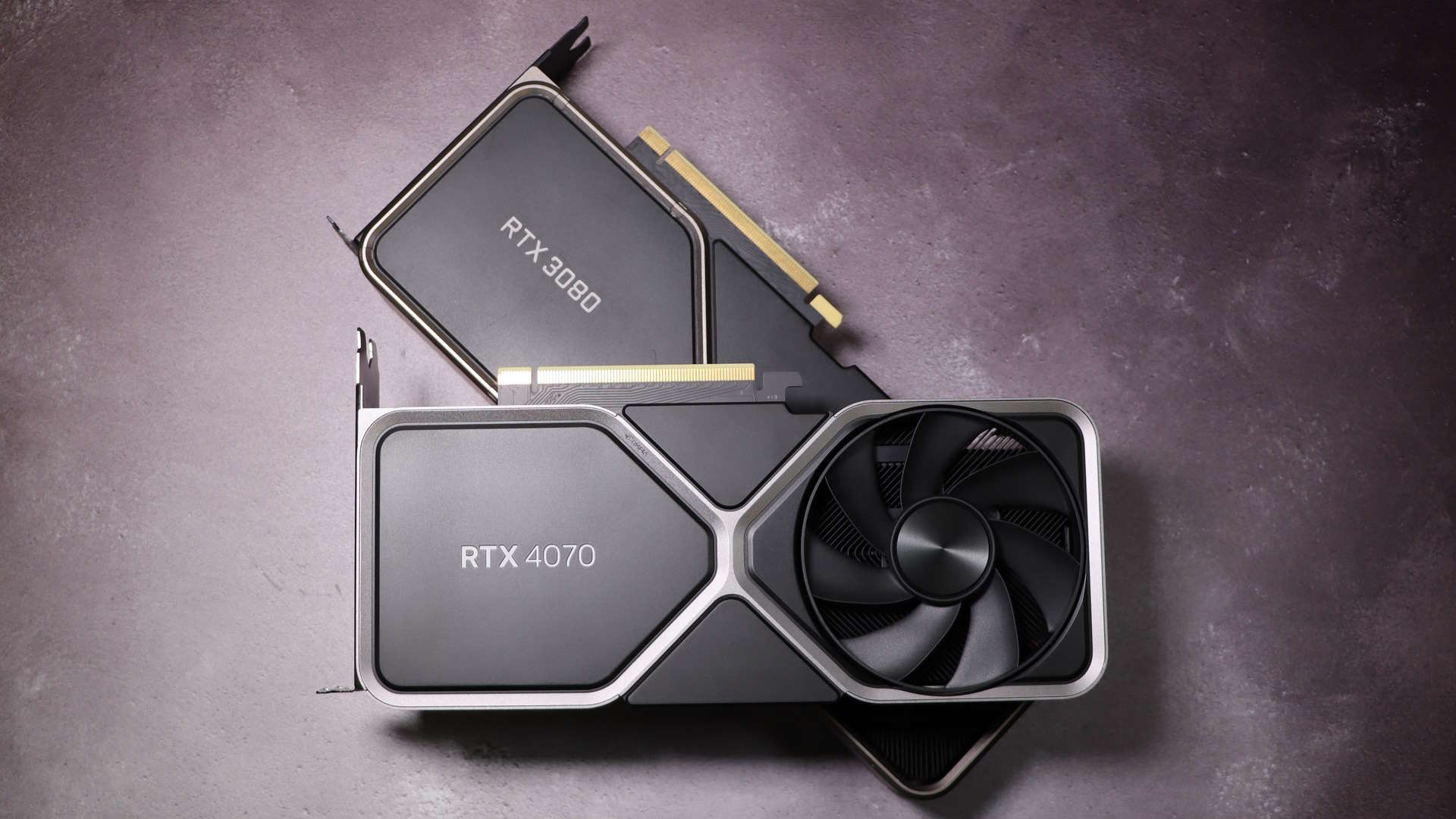Intel launches new Arc B580 GPU with 10% more performance than an RTX 4060 for $249 but the rumoured RTX 4070-beater is nowhere to be seen
Faster than an RTX 4060, but is it too little too late?

Do you want the good news or the bad news about Intel's new Arc B580 graphics card? OK, the main good news is that it exists at all. Intel's second-gen Battlemage graphics tech is official, it's announced, it's real and it's here.
Going by Intel's claims, the actual architecture looks pretty great, too. It's been updated to be more efficient, to deliver better utilisation and performance per graphics core and also sports improved ray tracing and AI performance. Indeed, pound-for-pound, it looks like Intel may now be able to match Nvidia for ray tracing performance.
But what about the bad news? Well, the new B580 and its B570 sibling are fairly low end cards. Nvidia is only aiming at marginally beating the Nvidia RTX 4060 for now. There is no B770 board with RTX 4070 or higher performance, at least not at this time.
To round off the key specs, the B580 is a 12 GB card with a 192-bit bus, which gives it a much more powerful memory subsystem than the RTX 4060. Is has more bandwidth than the RTX 4060 Ti, too. And only the 16 GB version of the 4060 Ti can match or beat the 580's VRAM.
It sports 20 of Intel's Xe cores and by our reckoning 2,560 shaders. That compares to 32 cores and 4,096 shaders of the existing top Intel GPU, the Arc A770. For the record, the Nvidia RTX 4060 rocks 3,072 shaders, though Intel's and Nvidia's architectures aren't directly comparable
| Row 0 - Cell 0 | Intel Arc B570 | Intel Arc B580 |
| Xe cores | 18 | 20 |
| Ray tracing units | 18 | 20 |
| XMX AI engines | 144 | 160 |
| Memory bus | 160-bit | 192-bit |
| Memory | 10 GB | 12 GB |
| Memory bandwidth | 380 GB/s | 456 GB/s |
| Core clockspeed | 2,500 MHz | 2,670 MHz |
| Board power | 150 W | 190 W |
| Video out | 3x DP2.1, 1x HDMI 2.1 | 3x DP2.1, 1x HDMI 2.1 |
There's also a cheaper B570 with slightly cut-down specs. Both cards are based on the same BMG-G21 GPU.
Overall, Intel is claiming that the B580 has the measure of the Nvidia RTX 4060 by 10% on average at 1440p while undercutting its $299 by $50. Intel is leaning into the memory advantage of its new cards for 1440p gaming in particular and with ray tracing enabled. After all, the RTX 4060 is a mere 8 GB card with a 128-bit memory bus.
The biggest gaming news, reviews and hardware deals
Keep up to date with the most important stories and the best deals, as picked by the PC Gamer team.
Intel claims, for instance, that while the B580 is slightly slower than an RTX 4060 in Forza Motorsport at 1440p with ray tracing disabled, the increased memory footprint of the game's Ultra RT setting sees the B580 crank out 64% faster frame rates when enabled.

To achieve this performance, Intel has made various tweaks to Battlemage's architecture versus the original Alchemist GPUs. Then headlines involve higher shader utilization and lower software overheads.
Details include 3-way co-issue, 256 kB L1 cache, an upgrade from 16 MB L2 cache to 18 MB and a larger pixel cache. But perhaps the most significant overhaul involves the RT engines.
The traversal pipelines and box intersections have a 1.5x performance increase over Alchemist while triangle intersections and the BVH cache are both 2x faster. All told, Battlemage certainly seems to have a very competitive ray-tracing engine.



Intel has also overhauled its XMX engines, which are equivalent to Nvidia's AI-accelerating Tensor cores, and has a new version of its upscaling platform known as XeSS 2 which includes frame gen tech. But we'll cover that in a separate story.
At launch, Intel says board makers including Acer, Asrock, Gunnir, Maxsun, Onix and Sparkle will have graphics cards on offer. So a reasonable array, it seems, but not exactly the most familiar role call of AIBs, it's fair to say.
The overall conclusion here is that the B580 looks pretty appealing at $249 compared to an RTX 4060, but it's arriving so very late in the current GPU product cycle.

Best CPU for gaming: The top chips from Intel and AMD.
Best gaming motherboard: The right boards.
Best graphics card: Your perfect pixel-pusher awaits.
Best SSD for gaming: Get into the game ahead of the rest.
Nvidia will likely have a new RTX 5060 available by spring, so the B580's window of opportunity it narrow. Had it arrived a year ago, as we suspect Intel originally planned, it would have been far more interesting.
Meanwhile, the question remains whether Intel will launch a faster Battlemage GPU. A larger BMG-G31 GPU with performance to match or even beat an RTX 4070 has been rumoured for some time. Given the margin by which the B580 undercuts the RTX 4060, you might have expected a BMG-G31 board to come in at about $400.
If it really did beat an RTX 4070 at that price, well, it could have been killer. As it is, there's no sign of it for now and we have every expectation of a new RTX 5070 with more performance early in the new year. At which point, and BMG-G31 based board would either somehow have to get a lot faster or just go even cheaper to make any sense.

Jeremy has been writing about technology and PCs since the 90nm Netburst era (Google it!) and enjoys nothing more than a serious dissertation on the finer points of monitor input lag and overshoot followed by a forensic examination of advanced lithography. Or maybe he just likes machines that go “ping!” He also has a thing for tennis and cars.